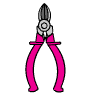


Technical information



Rover SD1 V8 Specifications.
| The Rover V8 is based on an American 215 cubic inch (3.5 litre) engine which first went into production in 1961. The variant adopted by Rover was known as the Fireball V8 in Buick and Pontiac cars, Oldsmobile used a slightly different version called the Rockette. The basic Fireball delivered 155 bhp at 4,800 rpm and produced 210lbs/ft torque. The engine was a bit of a damp squib in its homeland, where manufacturers soon reverted to conventional cast-iron blocks, and production there ceased after three years and about 750,000
units. from General Motors in 1965. In 1967 it made its first UK appearance in the Rover 3.5 Litre, followed by the Rover 3500 in 1968, the Range Rover in 1970, the MGB GT V8 in 1972 the Rover SD1and Land Rover V8 in 1979 and the (US only) Triumph TR8 about a year later. first acquired it. The first incarnations put out between 140 and 160 bhp. Significant mainstream developments have been the fuel-injected SD1 Vitesse engine (improved head design), the 3.9 litre Range Rover/MG RV8 engine (increase to 94mm bore), the 1972 4.2 litre Range Rover LSE (77mm stroke), the 1994 Serpentine engine and the latest 4.5. |
| General Specifications | ||
| Displacement | 3528 cc | |
| Bore | 88.9 | 3.50 |
| Stroke | 71.12 | 2.8 |
| Compression Ratio | 9.35:1 |
| V8 Engine | ||
| Compression Pressure | 9.1 bar | 130 Lb/in2 |
| Spark Plug Types | Unipart GSP 131 | Champion N12Y |
| Spark Plug Gap | 0.8 mm | 0.030 in |
| Spark Plug Gap 1982 on... | 0.9 mm | 0.035 in |
| Firing Order | 1-8-4-3-6-5-7-2 | |
| Number 1 Cylinder | front left (left-odd, right-even | |
| Distributor Rotor Direction | Clockwise | |
| Timing Marks | pointeron timing cover | scale on crankshaft pulley |
| Pick up air gap | 0.35 to 0.40 mm | 0.014 to 0.016 in |
| Ignition Timing - Static | 6degrees BTDC | |
| Ignition Timing - 1200rpm | vacuum disconnected | 10 degrees BTDC |
| Idle speed (auto in P) | 725 to 775rpm | |
| CO level at idle pre 1982 | 2- 4.5 % | |
| CO level at idle 1982 on | 3 3.5 % |
| Cylinder head | ||
| Material | Aluminium | |
| Valve Clearances | Hydraulic | |
| Valve Seat Angle | 46 degrees +/- 1/4 degree | |
| Valve Stem to Guide Clearance | ||
| mm | in | |
| Inlet at top | 0.02-0.07 | 0.001-0.003 |
| Inlet at bottom | 0.013-0.0635 | 0.0005-0.0025 |
| Exhaust at top | 0.038-0.088 | 0.0015-0.0025 |
| Exhaust at bottom | 0.015-0.10 | 0.002-0.004 |
| Oil Pump | ||
| mm | in | |
| Clearance between rotors and cover | 0.05 | 0.0018 |
| Crankshaft | ||
| mm | in | |
| Crankshaft endfloat | 0.10-0.20 | 0.004-0.008 |
| Maximum main bearing clearance before grind | 0.075 | 0.003 |
| Pistons, Rings and Conrods | ||
| mm | in | |
| Piston Clearance in cylinder (above rings) | 0.73-0.88 | 0.0296-0.0350 |
| Piston Clearance in cylinder (below rings) | 0.040-0.071 | 0.0016-0.0028 |
| Piston Clearance in cylinder (skirt bottom) | 0.018-0.033 | 0.0007-0.0013 |
| Big end running clearance | 0.015-0.055 | 0.0006-0.0022 |
| Conrod end play | 0.15-0.37 | 0.006-0.014 |
| Piston pin clearance (In Conrod) | press fit | |
| Piston pin clearance (In Piston) | 0.002-0.007 | 0.0001-0.0003 |
| Piston Ring Gaps | ||
| Oil Control Ring | 0.38-1.4 | 0.015-0.055 |
| Compression Ring gaps | 0.44-0.57 | 0.017-0.022 |
| Compression Rings to grooves | 0.08-0.13 | 0/003-0.005 |
| Conrod to Conrod Clearance | 0.15-0.37 | 0.006-0.014 |
| Tightening Torques | ||
| Nm | Lb ft | |
| Cylinder head Bolts numbers 1 to 10 | 95 | 70 |
| Cylinder Head Bolts numbers 11 to 14 | 67 | 50 |
| Timing wheel to camshaft | 61 | 45 |
| Timing cover to block | 27 | 20 |
| Inlet manifold to head | 40 | 30 |
| Exhaust manifold to head | 22 | 16 |
| Main bearing cap bolts | 75 | 55 |
| Main bearing cap rear bolts | 95 | 70 |
| Conrod cap bolts | 47 | 35 |
| Flywheel to crankshaft | 81 | 60 |
| Drive plate to crankshaft | 81 | 60 |
| Manifold gasket clamp bolt | 20 | 15 |
| Oil pump cover to timing cover | 20 | 15 |
| Oil relief valve cap | 40 | 30 |
| Sump drain plug | 47 | 35 |
| Sump to cylinder block | 11 | 8 |
| Rear sump to block | 24 | 17 |
| Rocker cover to head | 7 | 5 |
| Rocker shaft brackets | 40 | 30 |
| Damper to crankshaft | 290 | 210 |
| Crankshaft pulley nut | 211 | 150 |
Disclaimer.
RoverSD1Mania, or its members can not accept responsibility for any damage
or injury caused using this information, if in doubt, consult a qualified mechanic.